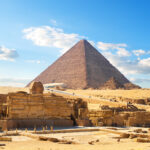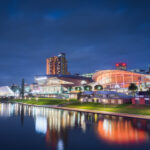Teach English in Argentina
Teach English in Argentina, one of the most soccer-obsessed countries in the world, while you explore this beautiful country known for its diverse landscapes, rich culture, and warm hospitality. Argentina is a large country in South America, spanning over 2.7 million square kilometers. It is the eighth-largest country in the world and the second-largest in South America after Brazil. Spanish is the official language, but English is also widely spoken, especially in business and academic settings. The population of Argentina is around 45 million people, with the majority residing in urban areas. The largest cities are Buenos Aires, Cordoba, Rosario, and Mendoza.
Argentina is known for its diverse landscapes, ranging from the Andes Mountains in the west to the Pampas grasslands in the east, and from the Iguazu Falls in the north to the glaciers of Patagonia in the south. Teaching English in Argentina can provide a unique opportunity to experience all that this country has to offer, while also making a meaningful impact by helping students develop their language skills. Get ready to tango into the weekend and don’t forget the rose!
Popular Cities
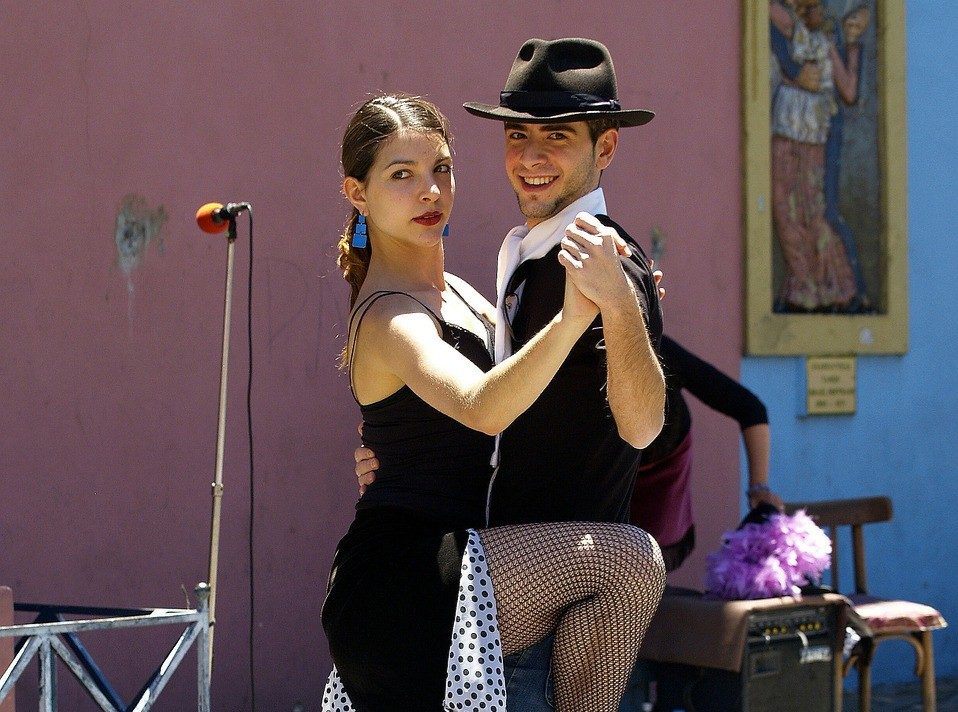
Tango in Buenos Aires
Buenos Aires
As a teacher living in Argentina there is much to see and do. Starting in the capital of Buenos Aires, which literally translates to “Good Air”. A city that has its architectural roots in Europe, after waves of immigration dating back over 200 years, with an estimated 50% of the country having some type of Italian descent. Visiting Buenos Aires, the capital city of Argentina, is a must for anyone who wants to experience the vibrant culture, rich history, and beautiful architecture of this South American country.
- Architecture: Buenos Aires is known for its stunning architecture, with styles ranging from art deco to neoclassical. A visit to the Teatro Colon, one of the world’s top opera houses, is a must for architecture and music lovers alike. The Palacio Barolo, a unique building inspired by Dante’s Divine Comedy, is also worth a visit.
- Tango: Buenos Aires is the birthplace of tango, a dance and music genre that originated in the late 19th century. Visitors can experience tango at the many milongas (tango clubs) throughout the city, or attend a tango show at a theater like the Café de los Angelitos or the Esquina Carlos Gardel.
- History: Buenos Aires has a deep history, with many landmarks and museums dedicated to its past. The Casa Rosada, the presidential palace, is a famous landmark that visitors can tour. The Recoleta Cemetery, where many famous Argentinians are buried, is also a popular destination.
- Parks and green spaces: Buenos Aires is known for its many parks and green spaces, including the Palermo Woods and the Ecological Reserve. These areas are great for walking, picnicking, or simply relaxing.
- Nightlife: Buenos Aires is a city that never sleeps, with a lively nightlife scene that includes bars, clubs, and live music venues. The San Telmo neighborhood is known for its tango clubs and street performers, while Palermo is a popular area for bars and clubs.
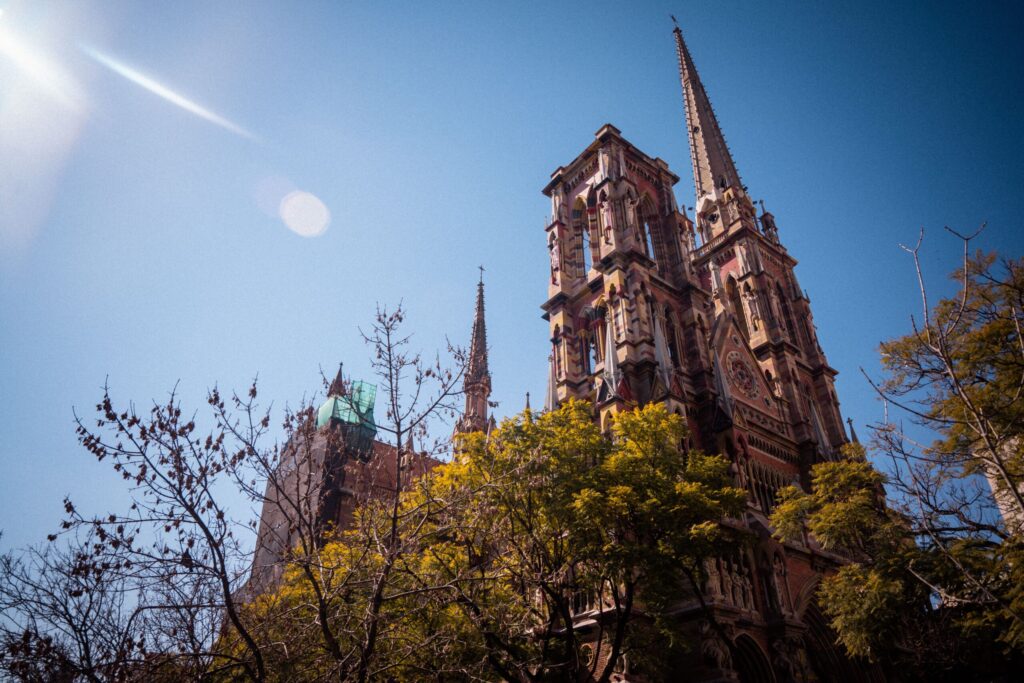
Cordoba
Cordoba is located in the central region of Argentina, it’s the second-largest city in the country, with a population of over 1.3 million people. It is known for its deep history and culture, with many museums, galleries, and festivals throughout the year. Cordoba is also home to many universities, making it a popular destination for students learning English and ESL teachers.
- Architecture: Cordoba is known for its colonial architecture, with many buildings dating back to the 16th and 17th centuries. The Jesuit Block, a UNESCO World Heritage Site, is a collection of buildings that includes the Cordoba Cathedral, the Jesuit Church, and the University of Cordoba. The Cabildo, a colonial government building, is also worth a visit.
- Culture: Cordoba has a rich cultural scene, with many museums, galleries, and festivals throughout the year. The Palacio Ferreyra, a museum of fine arts housed in a historic mansion, is a popular attraction, as is the Evita Fine Arts Museum, which showcases Argentine art from the 20th century.
- Nightlife: Cordoba has a lively nightlife scene, with many bars, clubs, and music venues throughout the city. The Güemes neighborhood is known for its bohemian atmosphere and live music, while Nueva Cordoba is popular with students and young professionals.
- Nature: Cordoba is surrounded by natural beauty, including the Sierras Chicas mountain range and the Parque Nacional Quebrada del Condorito, a protected area that is home to many species of birds and other wildlife. Visitors can go hiking, camping, or birdwatching in these areas.

Fitz Roy Mountain, Patagonia
Patagonia
Moving further south in Argentina, we get to the natural gem of this country: Patagonia. Visiting is a once-in-a-lifetime experience, offering people the chance to explore some of the most beautiful and unique landscapes in the world, learn about indigenous cultures, and observe diverse wildlife in their natural habitats.
- Natural Wonders: Patagonia is home to some of the most awe-inspiring natural wonders in the world. Visitors can explore the Perito Moreno Glacier, which is one of the few advancing glaciers in the world, or the Los Glaciares National Park, which is home to several other glaciers. Patagonia also boasts the Andes Mountains, the Atacama Desert, and the Valdes Peninsula, a UNESCO World Heritage site that is home to many species of marine wildlife.
- Outdoor Activities: With its pristine natural environment, Patagonia is a paradise for outdoor enthusiasts. Visitors can go hiking, mountain biking, fishing, and kayaking, among other activities. Torres del Paine National Park, located in the Chilean part of Patagonia, is a popular destination for hiking and trekking.
- Unique Culture: Patagonia is also home to several indigenous communities, including the Mapuche and Tehuelche people. Visitors can learn about their cultural traditions and history, which are often connected to the region’s natural environment.
- Wildlife: Patagonia is home to many species of wildlife, including guanacos, pumas, Andean condors, and Magellanic penguins. Visitors can go on guided wildlife tours to observe these animals in their natural habitats.
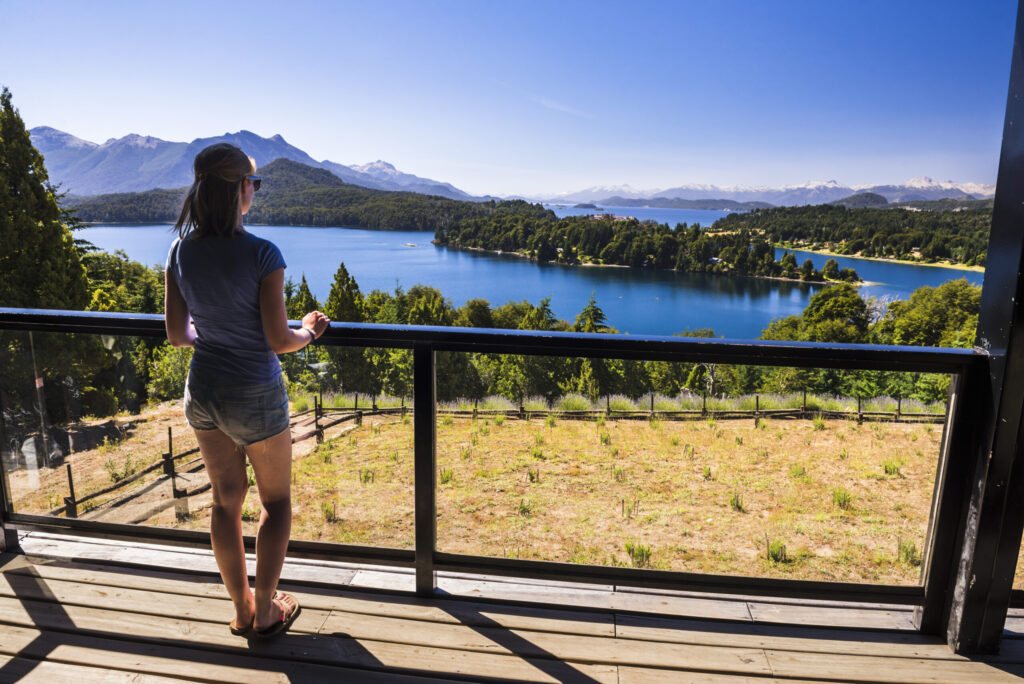
Bariloche, Patagonia
San Carlos de Bariloche
Bariloche is a picturesque town located in the heart of Argentina’s Patagonia region, surrounded by stunning landscapes of mountains, forests, and lakes. It’s the perfect outdoor destination for either Summer or Winter. Here are some highlights of what to expect when visiting Bariloche:
- Natural Beauty: Bariloche is known for its breathtaking natural beauty, which includes the Nahuel Huapi Lake and the Andes Mountains. Visitors can take a boat tour of the lake, hike through the surrounding forests, or go skiing in the winter months.
- Outdoor Activities: Bariloche offers a wide range of outdoor activities for visitors, including trekking, mountain biking, kayaking, and fishing. The town is also a popular destination for skiing and snowboarding during the winter season. It’s home to two major ski resorts, Cerro Catedral and Cerro Bayo, which offer a variety of slopes with stunning lake views for skiers and snowboarders of all levels.
- Chocolate: Bariloche is famous for its chocolate, and visitors can find numerous chocolate shops and factories throughout the town. Many of these shops offer tastings and tours, allowing visitors to learn about the chocolate-making process and sample some of the delicious treats.
- Swiss/German Architecture: Bariloche’s architecture is heavily influenced by its Swiss and German immigrant communities, which settled in the region in the early 20th century. Visitors can explore the town’s charming streets and buildings, which feature unique alpine-style designs.

Yerba Maté
Food
Argentina is a country with a diverse culinary tradition, influenced by its immigrant populations and regional differences. Here are some of the most popular and delicious foods to try when visiting Argentina:
- Asado: Argentina’s national dish, and consists of grilled meats (usually beef, but also pork, chicken, or lamb) served with chimichurri sauce. Asado is often cooked on an outdoor grill called a parrilla, and is a staple at family gatherings and social events.
- Empanadas: A popular snack or appetizer in Argentina, and are similar to turnovers or pasties. The fillings can vary, but often include ground beef, chicken, or cheese, and are wrapped in a pastry crust and baked or fried.
- Milanesa: A breaded and fried meat cutlet, similar to a schnitzel. It can be made with beef, chicken, or pork, and is often served with mashed potatoes, a fried egg, or a salad.
- Dulce de Leche: A caramel-like spread made from sweetened condensed milk, and is a staple of Argentine desserts. It is often used as a topping for ice cream, pancakes, or toast.
- Maté: Mate is a traditional Argentine drink made from dried yerba mate leaves steeped in hot water. It is a social drink, often shared among friends or family, and is sipped through a metal straw called a bombilla.
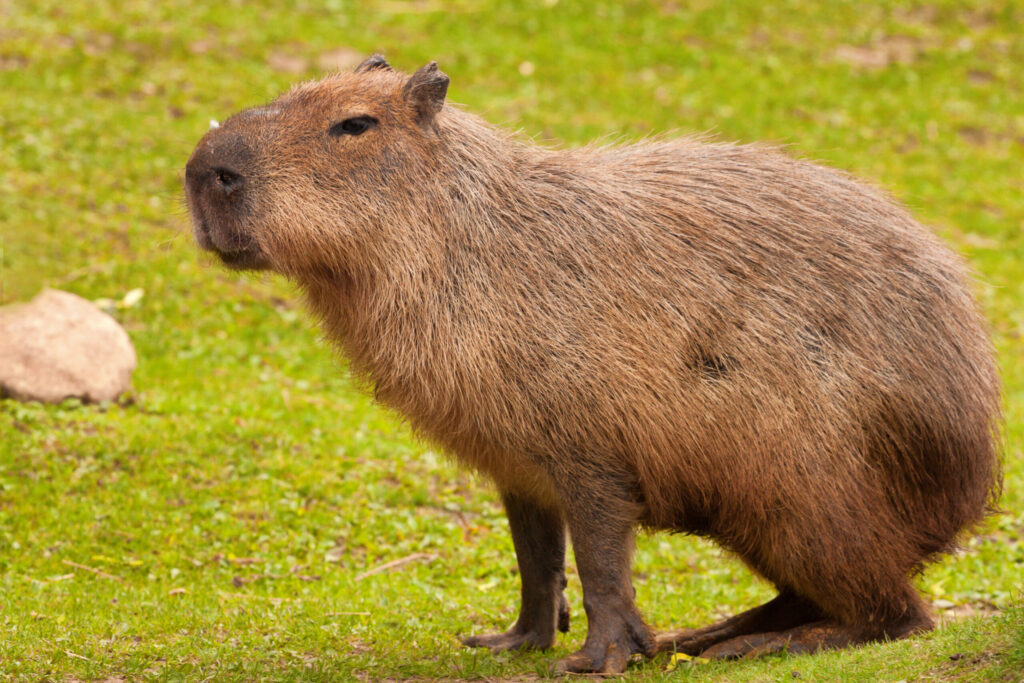
Capybara
Culture
Argentinian people are known for their warmth, friendliness, and passion. They are proud of their cultural heritage and are often described as being very expressive and emotional. They are diverse, passionate, and proud of their cultural heritage. Whether it’s through their love of soccer (football), their appreciation of tango music and dance, or their passion for socializing and sharing their culture with others, Argentinians are a vibrant and dynamic people.
- Outgoing: Argentinians are known for their outgoing nature and their love of socializing. They enjoy spending time with family and friends, and often gather together for meals, parties, or other events.
- Passionate: Whether it’s in their love of soccer (football) or their appreciation of tango music and dance, Argentinians are known for their passion. They are deeply emotional and are not afraid to express their feelings.
- Tango: A dance that originated in the working-class neighborhoods of Buenos Aires in the late 19th century. Today, it is a symbol of Argentinian culture, and the city is home to many tango clubs and events.
- Art: Argentina has a long tradition of art, from the stunning murals of Buenos Aires to the works of renowned painters like Antonio Berni and Xul Solar. The country’s vibrant street art scene is also a testament to the creativity and expression of its people.
- Generous: Argentinians are known for their generosity and hospitality. They enjoy sharing their culture and their traditions with others, and are often quick to offer a warm welcome to visitors.
Qualifications
An internationally recognised TESOL Certificate will be required to teach English in Argentina.
Visa
To work as an English teacher in Argentina, you will need to have a valid work visa. Most schools will help you obtain the correct visa and guide you through the process with visa assistance. Some students will originally enter on a 3-month holiday visa. The process of obtaining a work visa can vary depending on your country of origin, but generally, you will need to provide proof of your qualifications, a valid passport, and a criminal background check. It is important to check the specific requirements for each country and your language school for up-to-date advice.
Get Started!
Teaching English in Argentina is an incredible opportunity to experience a vibrant and diverse culture while making a positive impact on the lives of others. With its rich history, stunning landscapes, and warm hospitality, Argentina is an ideal destination for those seeking an immersive cultural experience. Additionally, the country’s affordable cost of living makes it an excellent choice for those looking to expand their horizons while also staying within their budget. Teaching English in Argentina and develop your teaching skills, build meaningful relationships with locals, and create memories that will last a lifetime.



















